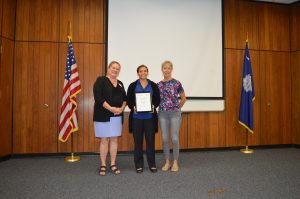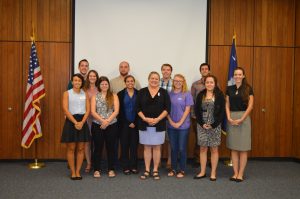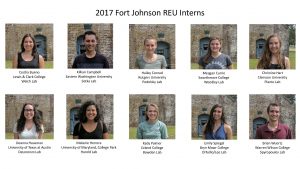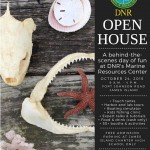Ever wonder what students do while working toward a Master of Science in Marine Biology?
Of course there are the classes, labs, tests, seminars, papers, work, studying, networking, etc…add in sample and data collection, data analysis, etc…oh yeah, and then there’s the thesis and defense!
Keilin Gamboa-Salazar is a third-year GPMB student getting ready to finish up the program and shared her research and goals with us.
Keilin is our resident international student from Costa Rica and works in the Reef Fish Section of the SCDNR. Her research focuses on the reproductive biology of Gag and Scamp Grouper. She is investigating the relationship between the number of egg-batches spawned per female, and the age and size of the fish. In addition, she is modeling the probability of spawning for a female, influenced by the age or size of the fish, as well as any associated environmental variables. This information will shed light on what variables can influence spawning with the ultimate goal of having a better understanding of the reproductive output of the fish stock, and incorporating this knowledge into the regional stock assessments. Keilin first got interested in this research because of the possibility of finding information which would lead to actual change in the way that fisheries are managed, and in that way have an impact on ocean conservation. When not looking through a microscope, Keilin highly enjoys going on research cruises up to 100 miles offshore, where you can see absolutely nothing but water in the horizon. She also enjoys getting to play with all sorts of fishes, and other critters when processing the samples for the Reef Fish lab. She hopes to develop a career in the fisheries which involves offshore cruises, with the ultimate goal of working for the conservation of the oceans. Keilin is currently working on finishing data analyses and writing her thesis, so look out for a thesis defense announcement in January!

Keilin with one of those other critters

Keilin showing off a Snowy Grouper
#GradStudentLife – A GPMB Student Profiles are written and compiled by second-year GPMB student Elizabeth Gugliotti




























